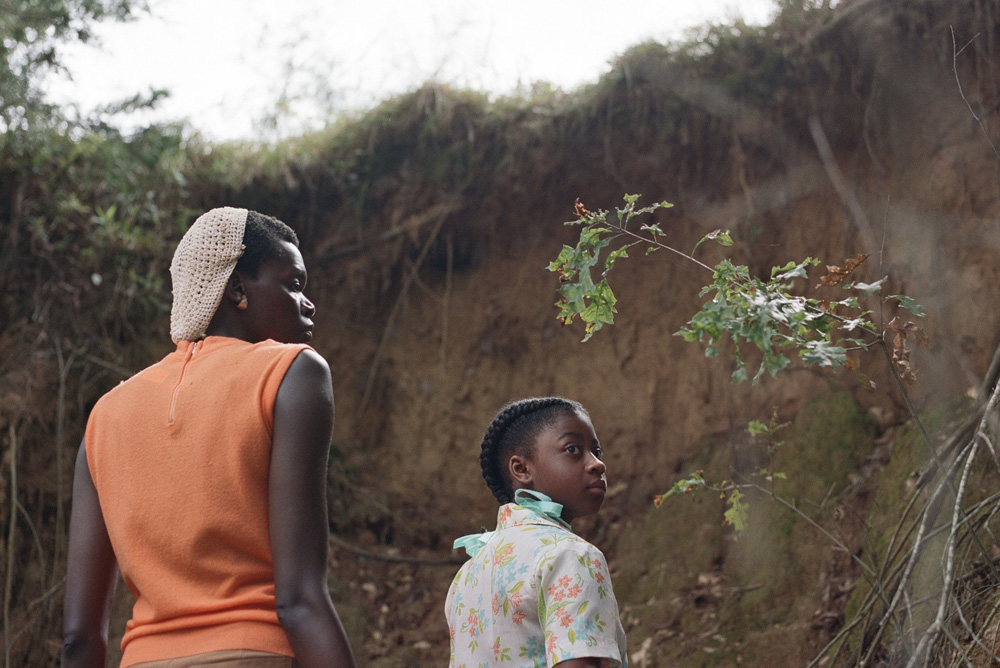There are a number of scenes in Raven Jackson’s magnificent “All Dirt Roads Taste of Salt” bound to spark conversation in the years to come, but already it seems the one that’s drawn the most attention is a moment when Mack (Kaylee Nicole Johnson), a young woman in Mississippi watches on as her parents (Sheila Atim and Chris Chalk) dance in a humble home that couldn’t feel any more full when the three of them are inside of it, and while the camera catches her looking on, it acts as nimbly to see what she does, searching the frame for various points of touch where any hurt accrued over the years from living in poverty seems to be healed with a rare bit of tenderness. It doesn’t hurt than Gladys Knight & the Pips’ “If I Were Your Woman” plays in the background to bring you in as tightly as the two hold each other — crazily a song choice that the director apparently didn’t make until after filming — but the even more beautiful quality to the moment goes beyond witnessing the love that’s kept the family going to feeling when it’s as if there’s no distance between what you and Mack are witnessing in a world that inevitably tries its best to tear people apart.
The idea that vision can be unified seems to be one of the operating principles of Jomo Fray, who will politely demur if referenced by his title on a call sheet as a director of photography when he sees his role as more of that of an interpreter, making a director’s imagination reality. You’ll hear cinematographers say this all the time, but Fray appears to achieve a true mindmeld with those he works with, engaging in longterm collaborations with directors such as Jackson and Tayarisha Poe where a soulfulness emerges from the frame when the intention runs so deep. Within a month’s time earlier this year, I had seen Poe’s “The Young Wife” at SXSW not long after “All Dirt Roads Taste of Salt,” and had my mind not already been blown by the versatility on display, it was thoroughly destroyed with the knowledge he shot the films with about the same time lapse between them. Although both films are intensely visceral, the latter impresses with stillness as it traverses generations, looking at Mack inherit the same depressed circumstances as her parents did before and locating the pockets of reverie within for herself, while the former is in constant movement as a bride-to-be (Kiersey Clemons) has the rest of her life flash before her eyes on her wedding day, sensationally stirring up all the emotions around her as she prepares to make her vows.
Other than a preference for the widest possible frame, Fray has somehow managed to be distinctive without having a signature style, taking on the personality of the characters he follows instead no matter how different they are from one another. Whereas there’s a commanding swagger to his work in “Selah and the Spades” where a queen bee (Lovie Simone) looks to assert authority over her private school and one can see both how imposing she is and the institutions she takes on in its use of negative space, it can feel like the walls are closing in on the tortured recovering addict (Charlie Heaton) at the center of Andrew Irvine and Mark Smoot’s “No Future” even in empty rooms, simply in how the light is let in. When “All Dirt Roads Taste of Salt” has a fragmentary structure where every word holds tremendous weight, it is pulled together by observation, intricately worked out by Jackson and a cast where every gesture expresses the totality of the experience behind it, but a real sense of tactility comes through in the cinematography where close-ups draw the eye to where the strongest emotions are felt, often in the least expected of places.
On the eve of the national theatrical run of “All Dirt Roads Taste of Salt,” Fray and Jackson could be seen celebrating at Indie Memphis Film Festival where the two could feel particularly triumphant when it was the festival’s screenwriting lab where the director first developed her debut feature and it caught the eye of Barry Jenkins, who helped produce it under his production company Pastel’s first-look deal with A24, and it was where Fray graciously took some time away from the festivities to talk about his long-term collaborations that have yielded such rich films, responding to what nature was giving him during the Mississippi-based shoot for “Dirt Roads,” and trusting his instincts behind the camera.
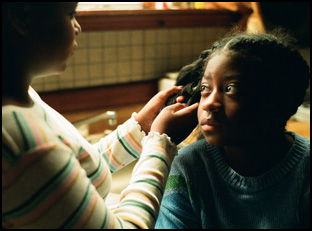
It was really incredible. Filmmaking is such a particular art form that I don’t think a movie is necessarily a movie before it’s watched by people. I don’t think it’s necessarily cinema, so there’s a way in which the project is so outside of my and Raven’s hands. Now, it’s just the way the world takes it in and feels the movie. It’s always such an incredible process with any movie, and specifically this movie because there’s so much of the personal wrapped into it that it just feels really special to see it and hopefully connect with people and think back to their own lives. And seeing Memphis see this movie was so wonderful since it has so many Southern undertones that I feel it was made for communities exactly like this.
Your connection with Raven predates this film and going back to the short “Nettles,” how did this collaboration start?
Yeah, we both went to NYU together, and I was a year above Raven in grad school, but I had always really admired her work, even from the earliest inception of it. Talking to Raven herself, but even seeing the movies that she was making, they always had this poetic bent to them, a latent, cinematic lyricism that I had always just been a fan of and I had been waiting throughout all of grad school to hopefully get a chance where a project made sense for the two of us to work on together, so when the opportunity for “Nettles” came [where we’d] collaborate together, I jumped at it. I had also worked with Maria Altamirano, the producer, on a lot of other projects, so when the three of us had something to collectively work on together, it felt like a dream.
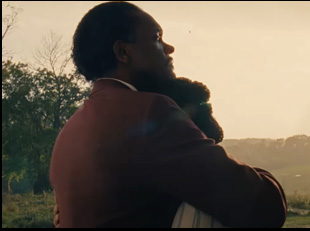
Yeah, I love that. One of the greatest aspects of fun and creativity about this process is the translation process and when I think about cinematography, I want to create images on their greatest hopes for their stories, to make them as evocative and specific as possible, so when I’m thinking about these longer collaborations [such as] Raven and Tayarisha and some of my other collaborators, I love it because then you’re not just talking about the movie. Whether we do a two-shot in this scene isn’t just a question of does the two-shot make sense in this scene, but it’s actually a conversation that we could have been having for a decade about the use of two shots in the edit and having emotional impressions to them. That is really exciting to me, because you have space to grow together over a period of time.
With Raven and I, moving from “Nettles” to “Dirt Roads,” we learned so much about not only cinema together, but also each other’s working styles that coming to “Dirt Roads” was then a really exciting prospect because we could take all of the leg work of what we had built together on a movie like “Nettles” and just expand it and get deeper, and in thinking about future collaborations together, I get really excited to then take all the things I feel like we learned from “Dirt Roads” and then reapply them and also anchor them and tailor them to different scenarios.
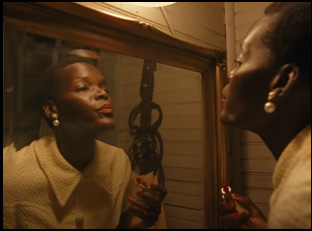
It was almost a bit of an overlap of the two. Raven and I really pushed ourselves and we had written a manifesto that we essentially read to one another at the start of every single day, and one of the points on the manifesto was to be present to the cinema on set. Raven would direct the action and we would find the scene, and we would watch it together in rehearsal and start to see the small gestures that are built into the rehearsal that we just find our eyes drawn to. Another thing on the manifesto was to speak in slant rhymes, which was almost a phrase that we used to remind ourselves that it was okay to be inspired by the same thing multiple times in multiple scenes. In that way, it was our attempt to try to create these motifs in the film, but to create them in a naturalistic way, so we didn’t go in thinking, “We want to shoot a lot of hands,” but we would find ourselves being inspired by what a character’s hands were doing at a certain moment in the scene, and we didn’t try to stop ourselves to have visual diversity with the film. We [thought],” If we keep being inspired by hands, just keep shooting them in the same way,” because then, especially the way that we structured the edit, there are so many ways in which the movie then speaks to itself in a way that was both found in the edit, but also in the shooting.
I’ve always loved your use of a wide 2.35 frame and it really works for this film, but seems potentially counterintuitive when you are in close-up so much of the time. Was that an obvious choice for you?
Yeah, from its inception, Raven had always been thinking about it as a 35 millimeter two-perf movie and although we did end up shooting two-perf, I feel like that wider aspect ratio just always felt right. Oftentimes, it’s felt right in the past with Raven and I working together and there’s really something with that aspect ratio that I love that you see people in relationship to their environment. Even a shot where you’re really close with someone, you still get the feeling of the room around them and I feel like for Mack, these moments in her life are so particular, but they’re also so informed by the people who are around her, the time period in her life, and the things that contextualize these small and big emotions, so having that wider aspect ratio was to try to connect these feelings of the environment and the things around Mac.
Also [we wanted to] shoot it spherical rather than anamorphic in 2.39, for example, [because] we wanted the image to never feel nostalgic, but the spherical [lenses], and especially shooting with the ARRI Master Primes gave us a very neutral type image for some of the worlds we were looking at, which was important. Although I think there was a lot of romance in how we shot it and the handheld, we wanted the image and the color to not feel very mediated.
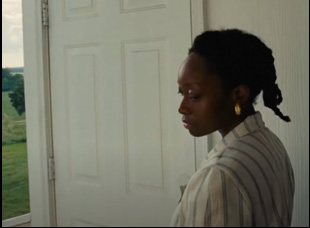
Definitely. For this one, it was almost a different type of meditation, almost finding ways that we could get out of our own way. One of the first points of the manifesto was to be elemental, and one of the ways in which we interpreted that was to be simplistic with the tools. Then weirdly it was more about being emotionally open day-to-day, scene-to-scene, moment by moment on set than was necessary. We chose tools so that the camera and the lighting can get out of the way a bit. Raven never really wanted a lot on set and didn’t want any artifice when we could avoid it, so my gaffer Jay Warrior and my key grip Forrest Penny Brown and our team created a lot of our lighting from outside in, and a lot of the time was using mirrors and a lot of other more unusual lighting apparatuses to create that feeling. It was a situation where a lot of the wood shedding and tests [before production] were actually about getting tools that could get out of the way and really allow the movie to be performance first, even though we were shooting on 35 millimeter.
It also struck me watching this a second time how connected the camerawork is to the characters as a function of movement – early on, there’s a scene of the characters riding bikes and it seems like the camera is following on one too. What was it like create that dynamic?
For so much of the movie, it was trying to feel these ways that the images could feel present tense. We never wanted the movie to feel like a period piece, even though we jump between 20-year cycles in the movie and I’m very inspired by Lucretia Martel. I once heard a quote where she [said she] only thinks of putting the camera in a place that a human who is invested but emotionally distanced from the events would be seeing the scene, and I have always subconsciously also thought that in terms of where to put the camera, especially for a movie like “Dirt Roads,” it was always [where] a natural gaze would feel like if I was in the room. If I was Mack, or a friend who was hanging out of the house where would my eyes drift? And for the shot in question, I believe we took the camera and hung it off of an industrial bungee cord on a follow car and shot at profile to the action to have a feeling that felt a little smoother than handheld but still had a frenetic present tenseness, feeling almost as if someone was biking nearby and looking over and catching these moments. That was a large part of it for Raven, of making these small beautiful moments of the mundane feel like they had wonder.
You bring out the beauty in those scenes, but there appeared to be plenty of it organically occurring in nature as well. What was it like to engage with the environment in Mississippi?
It was really incredible. In Mississippi, it’s such special landscape and such special light and oftentimes I just felt in awe of the environment. There were days where sometimes it would feel easy because there’d be low hanging fog in the morning, and every single morning we drove into set, my eyes were glued outside of the window because it was such an inspiring landscape, not because it was necessarily beautiful or or pretty but so human — I don’t really know how to articulate it better than that. So whenever we would shoot these wides, it was always with the goal of telling a very human story despite maybe not having a human in the frame and so much of our process was really about trying to take the cinema that was in front of us and to put it on film in its most simple way. Raven and I were giving ourselves space to be inspired by the landscape, inspired by the set and the environment to just drift towards shooting that and follow our follow our heart in that way.
“All Dirt Roads Taste of Salt” opens on November 3rd in limited release.




